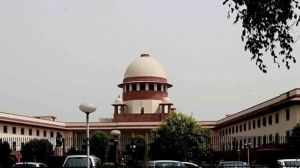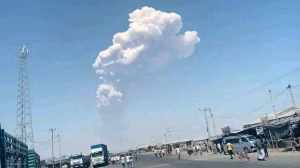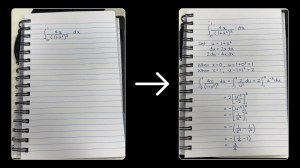A total of 82 companies out of the top 100 bank defaulters of 2019, including some of the biggest companies run by prominent industrialists, landed in the National Company Law Tribunal (NCLT) under Insolvency and Bankruptcy Code (IBC), 2016 and out of this, nearly one third of the companies went into liquidation over the years, suggesting banks would have hardly recouped any money, an investigation by The Indian Express reveals.
Since the IBC framework came into being in 2016, creditors i.e. banks had a way out. A status update of what happened to these top 100 defaulters shows that of the total 82 companies landed in NCLT, the corporate insolvency resolution process (CIRP) was initiated in 74 cases and as many as 28 companies went into liquidation over the years.

The investigation further reveals that these 100 companies together had a total debt of Rs 8.44 lakh crore in 2019. Of this, nearly half or Rs 4.02 lakh crore, was declared non-performing assets (NPA) or bad loans by March 2019. A total of 28 companies that went for liquidation, had a total debt of Rs 1.23 lakh crore. The average realisation by the creditors in liquidation cases is just 3.17 per cent.
The data on outstanding debt of these 100 companies as on March 31, 2019 has been collated through their annual reports, audit reports, filings in stock exchanges, annual returns filed with Registrar of Companies (RoC) and NCLT orders, which run into thousands of pages for all companies put together. For the first time ever, the list of top 100 bank defaulters has been accessed by The Indian Express under the Right To Information Act. This list came after knocking at the Reserve Bank of India (RBI) doors through multiple RTI applications and appeals over a four year period since 2019. The matter reached up to the Central Information Commission (CIC) and after multiple hearings, the central bank disclosed the information in November 2023, and that also only partially.
In fact, these top 100 defaulters accounted for nearly 50 per cent of the gross NPAs of Rs 9.33 lakh crore of all scheduled commercial banks as on March 31, 2019.

Of the total outstanding debt of Rs 8.44 lakh crore of these 100 companies, just 15 companies concentrated in three sectors — manufacturing, energy and construction — accounted for over 50 per cent (Rs. 4.58 lakh crore) of the debt. As many as 34 of the 100 defaulters were in the energy business, 32 in manufacturing, 20 in construction or real estate, and five in telecom. The balance nine companies belong to other sectors. A closer look at the list of the top 100 defaulters shows that just 30 of them accounted for over 30 per cent of the gross NPAs of FY19 or Rs 2.86 lakh crore.
Bhushan Power & Steel Limited topped the list with an outstanding debt of Rs 41,400 crore as on March 2019. The company was later taken over by Jindal Group’s JSW Steel. Essar Steel — later acquired by ArcelorMittal is in second position, with an outstanding debt of Rs. 69,360 crore. The other companies in the top 10 are Videocon Industries, VOVL Limited, Jaiprakash Associates, KSK Mahanadi Power, Reliance Communications, Alok Industries, Prayagraj Power and Jaiprakash Power.
Story continues below this ad
Current status and steep haircuts
A closer study of these 100 companies reveal that out of the initiation of CIRP against 74 companies for defaulting on loans, the resolution plan, which provides for the treatment of loans of creditors or banks, was approved in a total of 33 cases by the NCLT.
A total of 28 companies were referred for liquidation by the NCLT. So many companies going into liquidation shows that banks have got very little money back. According to the Insolvency and Bankruptcy Board of India (IBBI), a government regulator for the implementation of the code, the average realisation by the creditors against their admitted claims in liquidation cases is just 3.17 per cent. The analysis further shows that there are a total of 13 cases where CIRP proceeding is still ongoing. Apart from this, there are five more companies in the NCLT, where petitions have been filed for the initiation of CIRP against them.
In a total of six cases, including third biggest defaulter Videocon Industries Limited, either the resolution plan was rejected by NCLT & NCLAT or the CIRP proceeding was closed after the settlement between the parties and withdrawn of the case.
The Indian Express has analysed a total of 20 resolution plans, out of 33 approved plans, available on the IBBI portal. It reveals that a total of Rs 2.25 lakh crore of the financial creditors i.e banks were admitted in these cases, but out of this, only Rs 82,961 crore was provided under the resolution plan. Thus, the banks took a haircut of Rs 1.42 lakh crore in just one-fifth of the top 100 bank defaulter cases. The realised amount is only 36.84 per cent against the admitted claims.
Story continues below this ad
Out of this in 10 cases, the realisation amount is less than 30 per cent. In cases like MCNALLY Bharat Engineering Company Limited and ACIL limited, the amount realised is just 9 per cent and 5.94 per cent respectively. In case of Reliance Naval and Engineering Limited and GVK Power (Goindwal Sahib) Limited, the realised amount is just 16.30 per cent of the admitted claims. Similarly, in Essar Power M P Limited and Diamond Power Infrastructure Limited, the realised amount is only 20 per cent of admitted claim.
The highest realisation is in the Jaypee Infratech case, where financial creditors got 79 per cent of their admitted claims in the successful resolution plan. In case of top two bank defaulters — Bhushan Power & Steel Limited and Essar Steel India Limited — financial creditors got 41 per cent and 60.70 per cent amount respectively against their claims in the plan. The third biggest bank defaulter Videocon Industries Limited is still in limbo as the resolution plan approved by NCLT was set aside by NCLAT in January 2022 and a fresh resolution plan was ordered. According to the IBBI, the average realisation amount against the admitted claims where the resolution plan has been approved is 32.30 per cent.
The data is based on the analysis of 1,005 companies where the resolution plan has been approved till June, 2024.
Lower recovery and time consuming
A study by Indian Institute of Management (IIM), Ahmedabad, published in August 2023, shows that for financial creditors, the highest recovery rates were observed in the hotels and restaurants and construction industry and the lowest for electricity, gas and water supply.
Story continues below this ad
“Interestingly, the highest recovery rates are not for asset-heavy industries but rather for asset-light industries with substantial intangible assets. It also highlights the importance of an auction to realise the going concern value of an entity. Manufacturing is also among the lowest in terms of recovery,” said the report. The IIM study is concerning for banks especially in terms of these 100 defaulter companies as over 60 per cent of these defaulters are from Energy and Manufacturing sectors. The resolution plans of some of other big companies such as Jaiprakash Associates Limited, KSK Mahanadi Power Company Limited, Reliance Communications Limited, Videocon Telecommunication Limited, Rolta India Limited, Advantage Overseas Private Limited etc is still pending.
While, according to IBBI, the resolution process, on an average, is taking 679 days to conclude as against the standard timeline of 330 days, the delay is much higher in these top 100 default cases.
On an average it took 960 days from commencement of Insolvency process to the approval of resolution plan by the NCLT in these top NPAs cases. Similarly it took an average 690 days from initiation of CIRP to order of liquidation, while the overall average is 493 days. The delays are often due to litigations by multiple stakeholders with competing interests, which erodes the value of already distressed corporate debtor further and minimises the recovery value of the creditors.
An analysis of 947 resolved cases as of March, 2024 indicated direct correlation between the length of the resolution process and the recovery rate. According to the bankruptcy board, 453 companies took 600 or more days in resolution and it resulted in recovery of just 26.11 per cent. Whereas resolution in 0-330 days (140 cases) shows the recovery of 49.22 per cent and 330-599 days (354 cases) shows recovery of 35.98 per cent.
Story continues below this ad
The analysis also shows that out of the 34 energy-sector companies in the list, at least three companies have been acquired by Adani Power and the conglomerate’s resolution plan has been approved in one more case.
Apart from Adani group of companies, JSW Steel took over Bhushan Power & Steel, joint venture of ArcelorMittal and Nippon Steel acquired Essar Steel India Limited, Gail Manglore Petrochemical acquired JBF Petrochemicals Limited, Evonith Metallics Limited acquired Uttam Galva Metallics Limited and Evonith’s subsidiary took over Uttam Value Steels Limited.


































